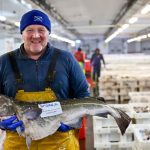According to the information as self-employed workers, no wage reports are collected by the state, and crews have fallen through the cracks when it comes to labor data showing their financial contributions to coastal communities. It is said that each must buy a fishing license, but it doesn’t tell if or when they fish, in what fisheries or for how long. The data is important for several reasons.
Geron Bruce, assistant director of the state commercial fisheries division, opined that it is difficult to estimate the total economic impact of commercial fishing unless you know something about the earnings and employment patterns for the crewmembers who are such an important part of the work force. And we don’t have any of that information.
Bruce also informed that the lack of data also means the “boots on deck” have been on the losing end of new management plans that dole out shares of the catch. He added that this is a cooperative project that would not be moving forward if we did not have the federal government as a partner in providing funding. State and federal agency reps met in January and developed five options to be presented to an industry advisory panel that is now being formed.
Bruce told that another challenge in this project is gathering 10 to 15 industry advisors who can represent fisheries in all Alaska regions, from small skiffs to large at-sea processors. He also said that they are interested in permit holders, boat owners, crewmembers, processors and communities.








